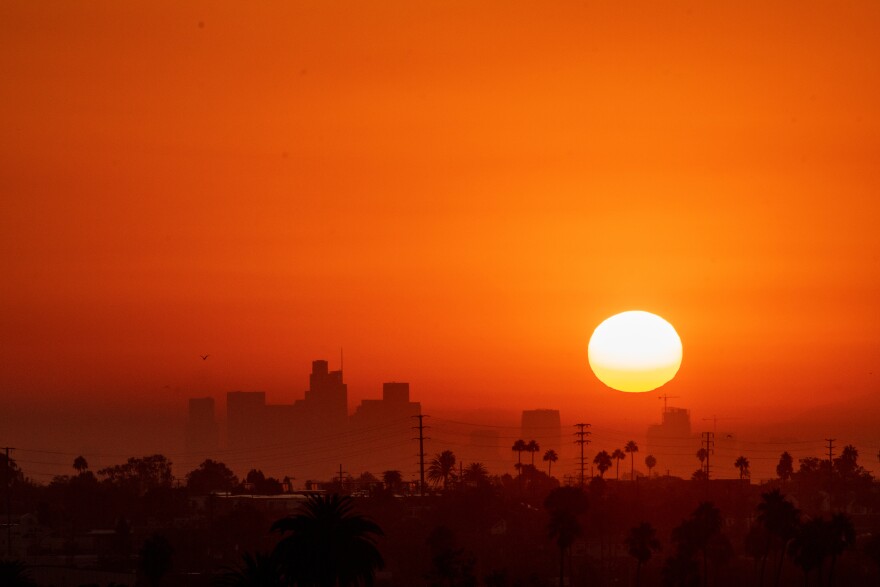With our free press under threat and federal funding for public media gone, your support matters more than ever. Help keep the LAist newsroom strong, become a monthly member or increase your support today.
3 Climate Impacts The US Will See If Warming Goes Beyond 1.5 Degrees

As world leaders gather at COP28, the annual climate change negotiations held in Dubai this year, one number will be front and center: 1.5 degrees Celsius (2.7 degrees Fahrenheit). That's the amount countries have agreed to limit warming to by the end of the century.
From LAist
The world is already perilously close to that number. Since the Industrial Revolution, the planet has warmed by about 1.2 degrees Celsius, predominantly due to heat-trapping emissions that come from burning fossil fuels. This year is expected to be the hottest on record, with temperatures in September reaching 1.8 degrees Celsius above average.
Currently, the world is on track for just under 3 degrees Celsius of warming (more than 5 degrees Fahrenheit) by the end of the century. While a few degrees of difference may seem small, climate research shows that every tenth of a degree can have a profound effect when it comes to the dangers posed by extreme weather.
"We're not destined for some catastrophic climate," says Deepti Singh, who is an assistant professor at Washington State University. "We know that we can have a future that is more equitable and less volatile if we limit the warming through our actions today."
Here are three climate impacts that get substantially worse in the U.S. if the world exceeds 1.5 degrees Celsius of warming.
1. At 1.5 degrees of warming worldwide, the U.S. will heat up even faster
When scientists use numbers like 1.5 degrees Celsius to measure climate change, it represents an average of all the annual temperatures worldwide. That average masks the fact that some parts of the planet are heating up faster than others.
In fact, the U.S. is warming up at a faster rate than the global average, which means the effects of climate change will be more pronounced. That difference has to do with how the extra heat is absorbed, as well as regional weather patterns. Generally, warming is happening faster on land and in the polar regions.
"The U.S. has already warmed at a rate that's higher than the global average," says Singh. "We're warming at a rate that's 60% higher than that."
2. Rainfall intensifies beyond 1.5 degrees of warming
Hurricanes and tropical storms are getting more intense as the climate warms, but they aren't the only storms affected. Even regular rainstorms are getting more extreme.
"Every time we have a heavy rainfall event, it's more likely to be even heavier than what we're typically used to seeing," says Deanna Hence, assistant professor at the University of Illinois Urbana-Champaign. "So that can mean flooding and other risks that come with those really high rainfall rates."
The air in a hotter atmosphere can hold more water vapor, which can fuel heavier rainfall. That means that beyond 1.5 degrees Celsius of warming, cities in the Midwest and Northeast will be faced with dramatically more water, which can overwhelm storm drains and infrastructure, causing flooding. Today, most cities aren't designing their infrastructure to handle more intense rain.
3. Extreme heat gets worse, meaning more hot days and fewer cold ones
Heat waves take a massive and sometimes hidden toll in the U.S., causing cardiovascular and other health impacts, in addition to deaths. Climate science shows they're already getting longer and more intense.
Nighttime temperatures are also increasing, which exacerbates the effects of a heat wave. Humans, animals and plants need recovery time from extreme daytime temperatures. Without it, health impacts and crop losses are even greater.
As the planet warms, winters will also be affected. The number of days below freezing would shrink past 1.5 degrees Celsius of warming, especially in the Mountain West. That could impair the snowpack that provides a vital water source for millions of people. Warmer winters can also harm crops and increase vector-borne diseases.







